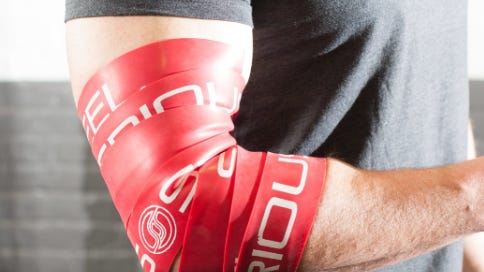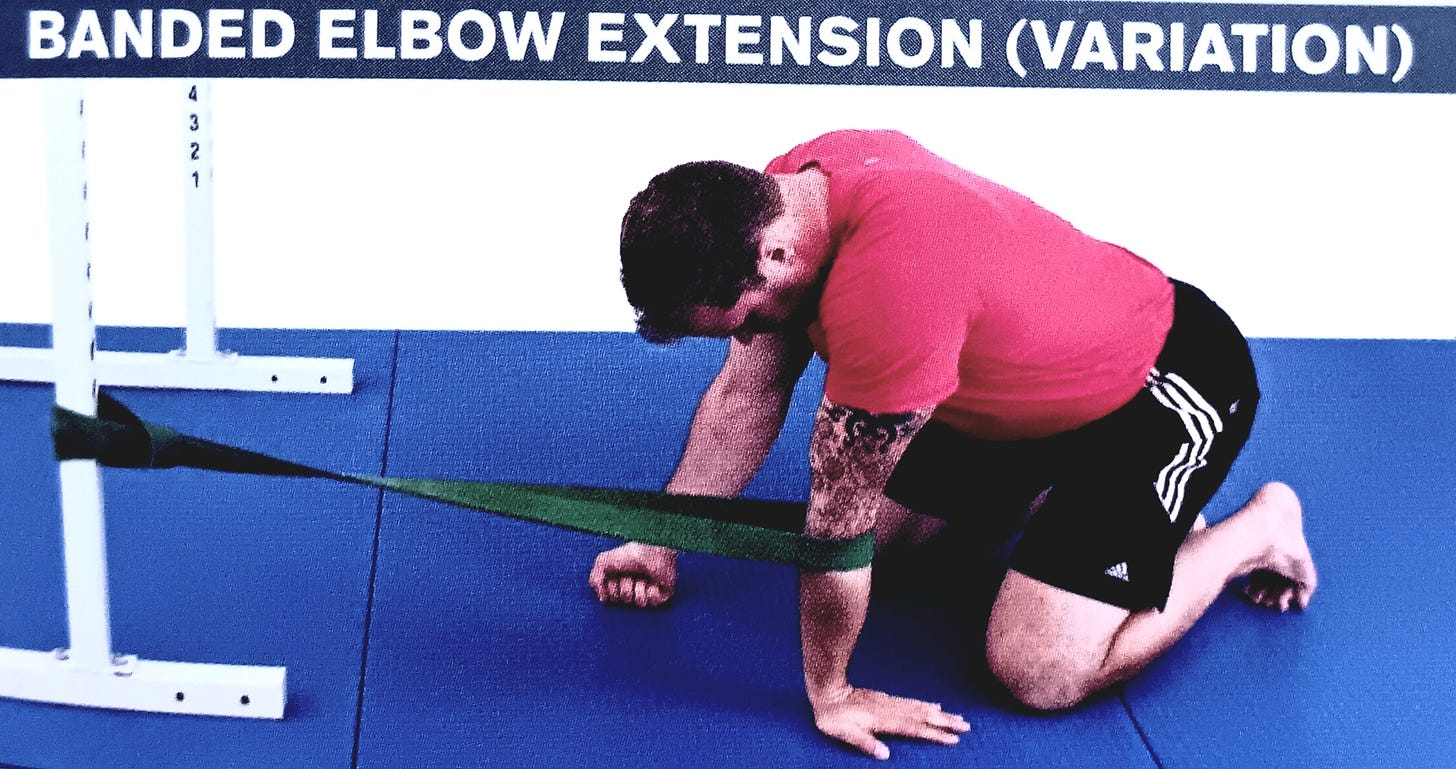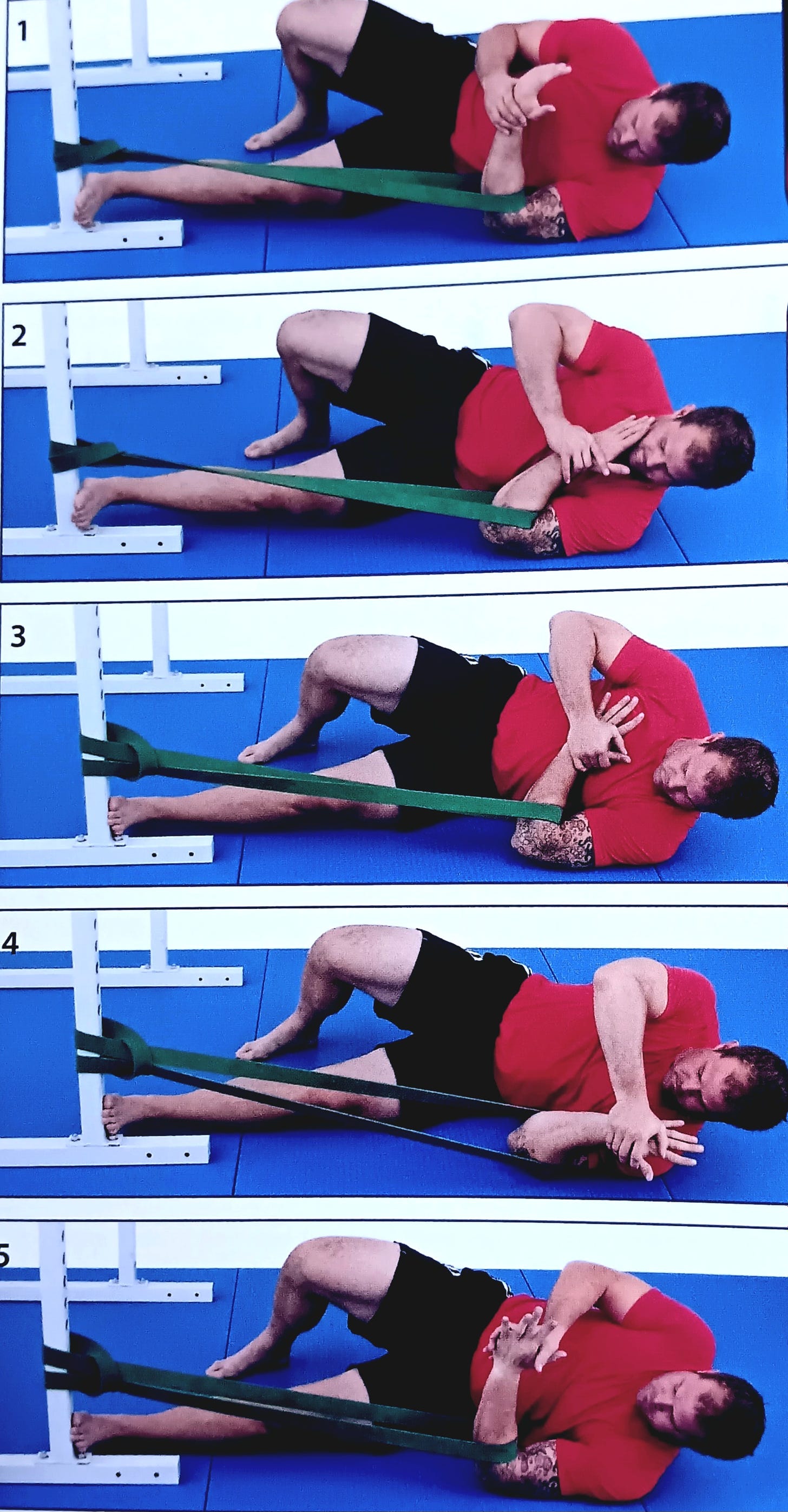This blog post is a simplified and creative interpretation of the "banded elbow extension" chapter from the book "Becoming a Supple Leopard." It aims to provide a comprehensive overview of the technique, its benefits, and how to integrate it into your training regimen.
Your elbows take an insane amount of stress from everyday life. There’s a ton of bending, flexing and extending that, when overdone, cause elbow stiffness and pain. If you’ve gone through the experience, you know exactly what I’m talking about.
Once you get into trouble with the elbow, no matter if you’re an athlete or everyday working person, the pain tends to increase. Range of motion becomes limited not only with bending and extending, but through the rotational component of the smaller structure (the elbow) that generates stability in the larger structure (the shoulder).
So how do we restore full range of pain free motion? One of the key components of this journey is the banded elbow extension, a technique that, when mastered, can transform your athletic performance or overall well-being in everyday life.
The Benefits of the Banded Elbow Extension
Improved Flexibility: The banded elbow extension helps to increase the flexibility of the elbow joint. This can be particularly beneficial for activities that require a wide range of elbow movement.
Enhanced Strength: By holding the elbow in a fixed position while extending the arm, the banded elbow extension can help to build strength in the elbow joint. This can improve overall arm strength and stability.
Better Proprioception: The technique enhances proprioception, or the sense of body position and movement. This can improve balance, coordination, and overall athletic performance.
Reduced Risk of Injury: By improving flexibility and strength in the elbow joint, the banded elbow extension can help to reduce the risk of injury. This is particularly important for athletes and individuals who engage in high-impact activities.
How to Perform the Banded Elbow Extension
The elbow should be worked from two positions to account for the rotational component of the structure. You floss in and out of extension by bending the elbow into the band, and then under control, straightening the arm into extension and distraction to end range of motion.
Positioning: Sit on the floor with your knees apart. Place a resistance band around your elbow, ensuring tension by sliding your elbow back. Make sure to keep the fingers pointed in the direction of the band
Keep hooked hand stable: Keep the banded elbow joint stable by placing your opposite hand over the banded elbow hand.
Extending the Elbow: Slowly extend your elbow outwards into the band, ensuring tension in your elbow joint.
Hold the Position: Hold the extended position under control and at its end-range for a few seconds, then slowly return to the starting position. Now flex and extend the elbow until you achieve full range of motion.
Repetitions: Repeat the exercise for 10-15 repetitions, focusing on maintaining control and not allowing the elbow to move out of the banded position.
An alternative to this method is voodoo flossing the elbow using the same technique.
Here is a video explaining it by Dr. Kelly Starrett. This is an even better method, according to the master of the technique, and it’s worth listening to because this guy knows the subject extremely well:
Banded Elbow Extension (Variation)
To capture the entire capsule, you have to hit the elbow from an open and closed palm position. In other words, you’re working from a full pronation and supination to account for the rotational components of the elbow and ties in the forearm and wrist structure. The picture probably won’t cut it, so I’ve included a video below it with a demonstration.
Banded Elbow Distraction
This is another way to solve poor elbow flexibility and pain. The band distracts your elbow joint and creates a gapping force in the elbow crook, helping clear joint impingement. Make sure to move your arm in different directions to account for the rotational component of the elbow structure.
You need to oscillate in and out of end range flexion, as well as exploring full range motion of the elbow by turning your palm towards and away from you. This completely changes the dynamics of how your elbow is mobilized.
Picture 1: Hook the band on the bottom of the forearm, in the elbow crook, then push yourself away from a rack or a stationary object to create tension.
Picture 2: Pull your left hand towards your face using your right arm. This will create quite some stress but power through it.
Picture 3: Reposition your right grip on your left hand, hooking the web of the right hand around the left thumb and over the top of the hand.
Picture 4: Using the right hand, force the left arm laterally towards your left side while twisting your palm towards the ground.
Picture 5: To ensure you hit all the corners, reposition the grip on your hand, this time gripping your left palm.
Picture 6: Twist your palm away from your body.
Pull your left hand to your face keeping your palm facing away from your body.
Reset your position
Now force your left arm into flexion, while pushing your left hand toward the outside of your body with your palm facing away.
Conclusion
Spending some time giving your joints some much needed TLC might not be a bad idea. The banded elbow extension and distraction are powerful techniques that can significantly enhance your physical performance and overall well-being by once again giving you pain free and full range motion by improving your flexibility, strength, and proprioception.









